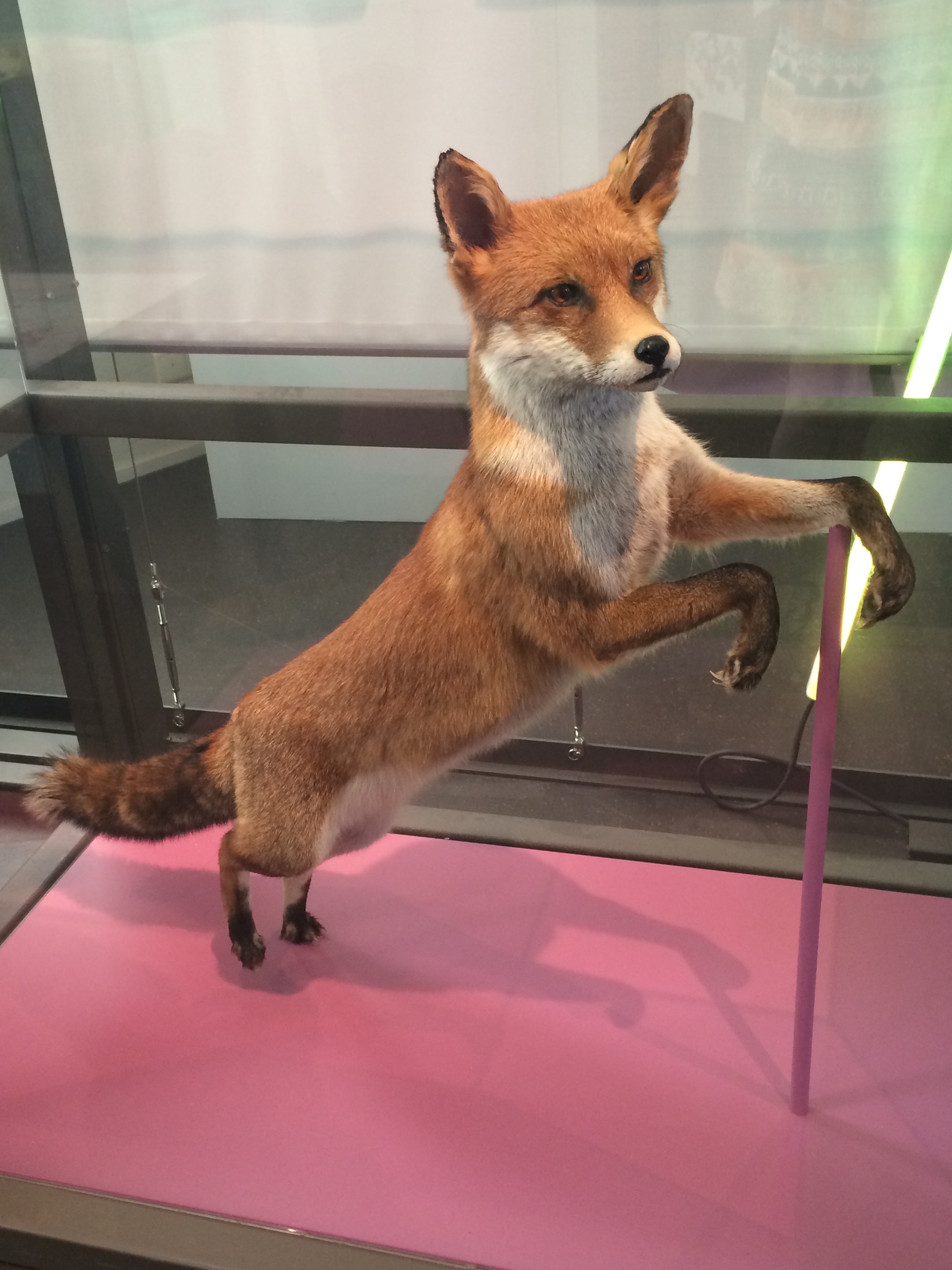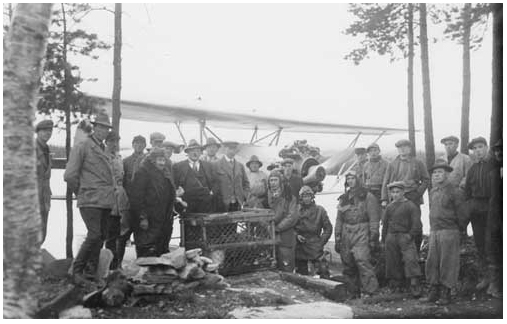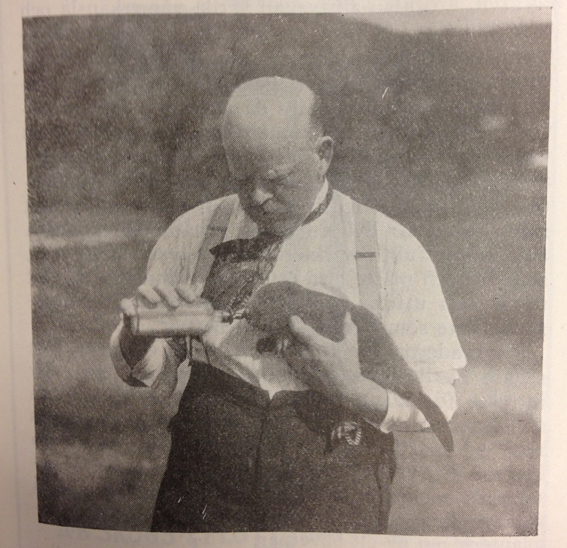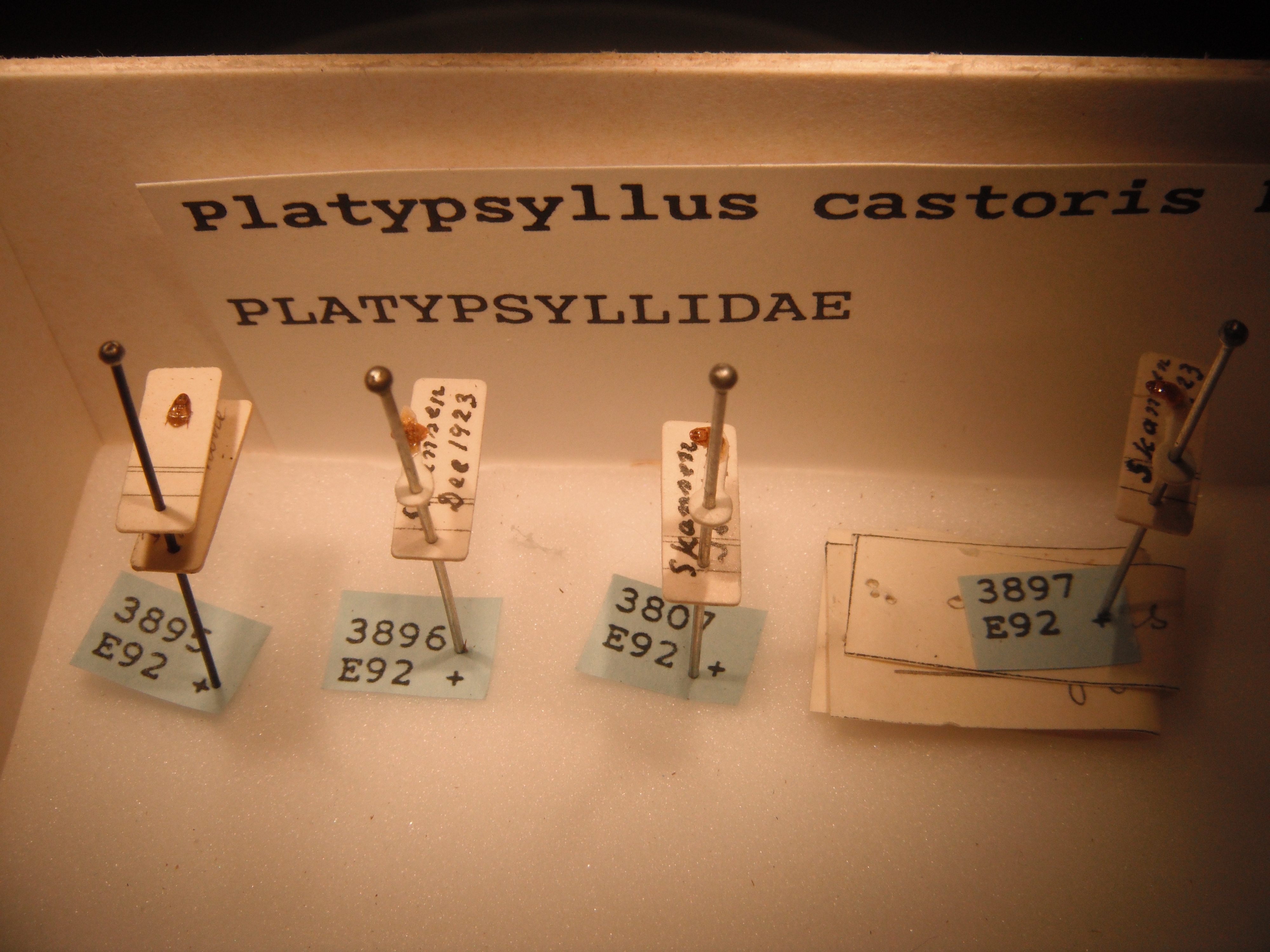
Missing meta-data
Today I visited the Naturhistoriska riksmuseet in Stockholm. Although my visit included the usual thing of looking around the exhibits, this time I also got to go behind the scenes in the entomology department. I got to see the museum’s collection of Platypsyllus castoris, the beaver beetle that I have written about before.
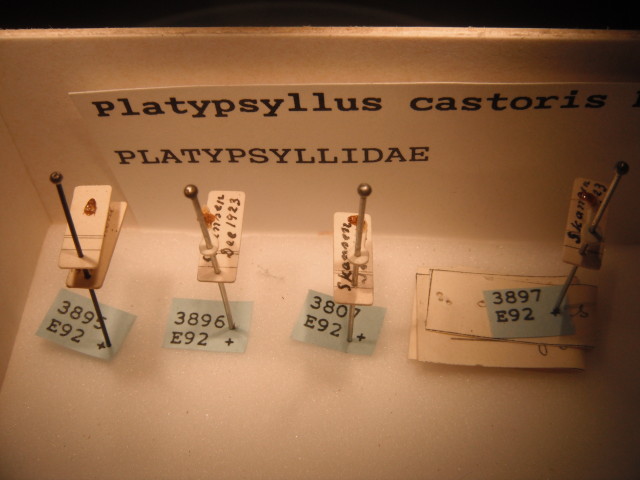
The collection at NHRM includes only four specimens. Three of them are labeled “Skansen Dec. 1923”. The fourth is labeled “Delta du Rhône”. This isn’t a lot of metadata to go on. So what can we know about these specimens?
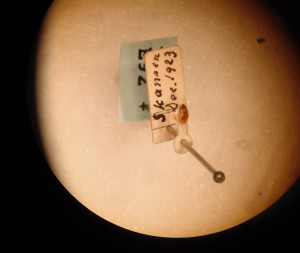
Since beaver beetles only come from beavers, that’s the obvious place to look. Thus the question is: In December 1923, what beavers were in Skansen?
Skansen had acquired a pair of North American beavers (Castor canadensis) in 1910. These beavers died some time in 1923, which we know because the year-end report for 1923 includes a comment that “two Canadian beavers died”. Their deaths are probably attributable to a disease which broke out in late 1922 from hares imported from Finland. A letter from the Suvenniemi Zoologiska Station director to Skansen director Alarik Behm dated 28 November 1922 acknowledged Skansen’s notice of the dead hares and a bacteriological sample sent to them. Skansen lost many small mammals to the outbreak from fall 1922 through 1923. It’s unclear when during the year the Canadian beavers died — possibly the beetles were collected from them in December 1923 — but it seems unlikely.
Skansen also had European beavers (Castor fiber) in 1923. In February 1923, one beaver was imported from Norway and held at Skansen before release in northern Västerbotten. That beaver died during the spring from intestinal inflammation. Then two more were bought from Norway in September 1923. Some time by January 1924, these two died from the hare’s disease. The timing of their deaths means that they would be the most likely source of the beetles.
We can guess, then, the three Skansen Platypsyllus castoris specimens were collected from European beavers that had recently been caught in Norway and were destined for reintroduction in northern Sweden, but who died before they could be released.
The other beetle’s label was written in French: “Delta du Rhône”. It was likely given by someone from France to the museum, but it is unclear when that would have been. The insects were first collected in France’s Rhône river reaches in 1883, so it must have been after that. Since the label says it was from the Rhône delta, it certainly was from a wild European beaver. At this point, that’s all I can deduce.
The moral of the story? Make sure you write down what kind of beaver you collect a beaver beetle from. Meta-data matters.
** Special thanks go out to Senior Curator Johannes Bergsten for showing me the specimens and re-gluing the ones that jumped off their perches when I tried to get a closer look.
